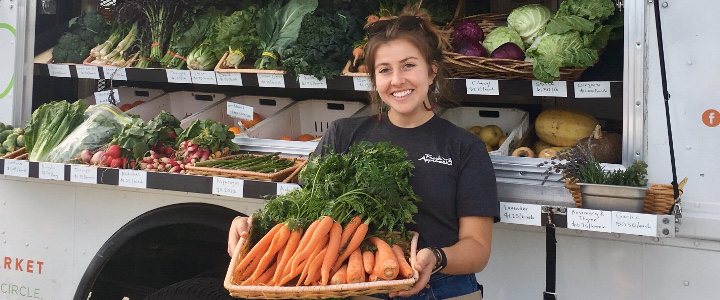Written by Ivy Hirsch
Spring 2018
In the United States today, nearly 50% of all American adults have one or more diet-related chronic diseases such as type 2 diabetes, obesity, and cardiovascular disease.¹ People of color and low-income status make up a majority of this population due to a lack of access to healthy foods.³ Our current food policies pave the way for large-scale, pesticide-infused, fossil-fuel guzzling monoculture farms, factories, and corporations to thrive financially, while their consumers’ health plummets due to environmental and human health hazards. In addition, our industrialized food system illuminates the deeper racial and class-based structural inequalities that consume United States culture. In California alone, 4.9 million people face food insecurity, despite the state producing nearly 50% of the entire nation’s fruits and vegetables. 20.6% of California residents are poverty-stricken, the highest rate of poverty in the nation, and 24.2% of California adults are obese.² Food insecurity and obesity are often associated due to lack of access to fresh, healthy, and affordable foods, circling back to the overarching problem of inadequate food policies. This is a problem of both access and affordability; the former pertaining to inequalities in the distribution of grocery stores providing healthy food, and the latter in regards to governmental subsidies disproportionately given to corporate growers and food manufacturing companies. And this is where Fresh Approach comes in!

